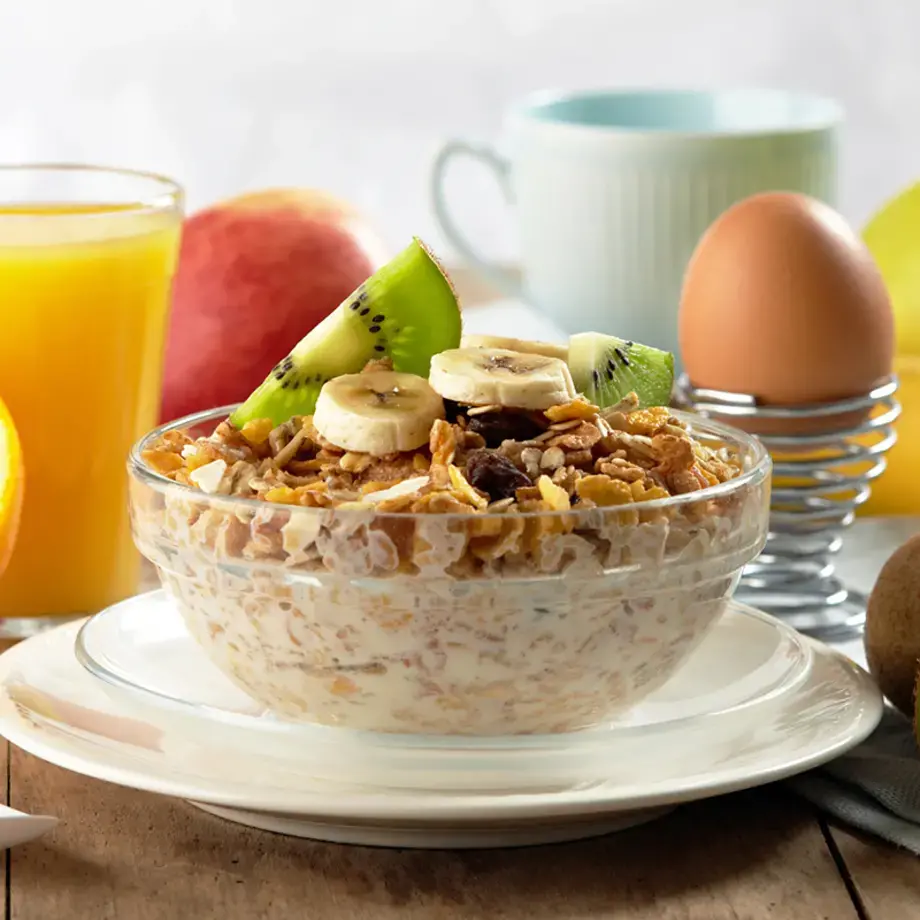America
After the discovery of America, turkey began appearing on the tables of European royalty. Many believe that it was Christopher Columbus who introduced the meat to the Old Continent, as it became widely consumed in Europe in the early 1500s, after it was first brought to Spain.
Breast
The turkey breast is most beloved part of the bird for gourmands. Tradition dictates that it should be served slices, never chopped. At the Thanksgiving table – where turkey is usually the centerpiece – the head of the family will carve the bird, starting with the breast.
Cholesterol
Without the skin (the fattiest part of the turkey), turkey is a great low-cholesterol food: 100 grams of roasted turkey contains 82 mg of cholesterol.
Digestible
Easy to digest, the muscular fibers of turkey meat are much shorter and thinner than those found in beef. It’s a food commonly recommended for those with digestive problems.
Eggs
Though not commercially in demand, turkey eggs are just as edible as chicken eggs. Female turkeys lays their eggs in a hole in the ground, and can produce up to 15 eggs each time.
Female
The meat from a female turkey is more tender and flavorful than that of a male turkey. The ideal weight of an adult female turkey is about 4 kilos.
Glowing skin
Turkey meat is a great ally for your skin. Its nutrients favor cellular renewal, help combat dryness and early signs of ageing.
Hours of cooking
If you want to cook turkey like a true America, the main ingredient is patience. In general, turkeys are cooked in a 150°C oven for about 2.5 – 3 hours for a bird weighing about 5.5 kilos. For larger birds, you might need between 4 and 5 hours!
Inductivist Turkey
Philosophers Bertrand Russel and Karl Popper used the concept of an “Inductivist Turkey” to express the weakness of inductivist thinking, in which mankind tends to establish universal rules on the basis of single instances.
Joaquin and Joss
Stars like Joaquin Phoenix and Joss Stone have made a point of refusing to eat turkey on Thanksgiving, as they don’t believe in the inhumane business of turkey farming.
Kilocalories
The caloric content of turkey varies according to the cut and cooking technique. A 100 grams of roasted turkey breast contains 194 kcal; the same amount of a roasted thigh contains 206 kcal.
Light recipe
Dieting? Stuffed turkey can be made in a low-calorie version by eliminating the skin, and choosing a fruit-based stuffing.
Meleagris
It is the scientific name for the common turkey. Within the Meleagris genus is the Gallopavo species, otherwise known as the Wild Turkey.
Noble
In ancient times, turkey meat was considered a noble food and in Europe between the 16th and 18th Centuries, turkey was almost always present in royal banquets.
Origin
Turkey is thought to have been introduced to British tables thanks to Turkish merchants. This is thought to be the origin of the name, which was initially “turkey-cochs”, and then was shortened for convenience.
Peta
The animal rights association has fought for the improved treatment of turkeys and turkey farming on several occasions.
Quiche
Roasting is not the only way to enjoy turkey. One of the most popular ways to enjoy turkey meat (especially leftovers) is by making a quiche. Try combining your leftover turkey with seasonal vegetables like broccoli, mushrooms or potatoes.
Record
Turkeys are large birds, but the largest Wild Turkey on record weighed 16.85 kg (just over 37 lbs)!
Stuffed Turkey
Stuffing a turkey is part of the American culinary tradition, but there are myriad ways to do so. Some of the most common ingredients in a turkey stuffing are: aromatic herbs, onions, sweet corn, dried prunes, breadcrumbs, chestnuts and apples.
Thanksgiving Day
Thanksgiving Day falls on the fourth Thursday in November; in Canada, the second Monday in October. The first Thanksgiving Day was celebrated in 1621 in Massachusetts, when the Pilgrims hosted a feast to celebrate the harvest. It became a national holiday in 1863, under President Lincoln.
University of Stanford
Il tacchino è un vero toccasana per la salute. Lo sostiene una ricerca condotta dall’Università di Stanford sull’utilità del triptofano, presente in discreta quantità nella carne di tacchino. I benefici? Influisce positivamente sull’umore, sulla qualità del sonno e anche sul sistema immunitario.
Vain
Are you vain? Calling someone a “turkey” is a way of saying they pay an inordinate amount of attention to their appearance. Male turkeys puff up their feathers when it’s time to court the females.
White
Turkey is a good source of white meat. Lean in fat and high in protein, white meat is a healthy addition to the diet, as it helps the body eliminate toxins and supplies humans with precious amino acids.
Xmas
While in the States, turkey is consumed at most Thanksgiving tables, in the UK it is commonly the main dish for Christmas day lunches.
Young
Turkey meat is best eaten while young. Most turkeys are butchered between 16 and 26 weeks. Zinc – Turkey meat is an important source of zinc, a mineral that aids the immune system and combats aging. 100 grams of turkey thigh contains 3.22 mg of zinc. When roasted, the zinc content decreases to 2.96 mg.







